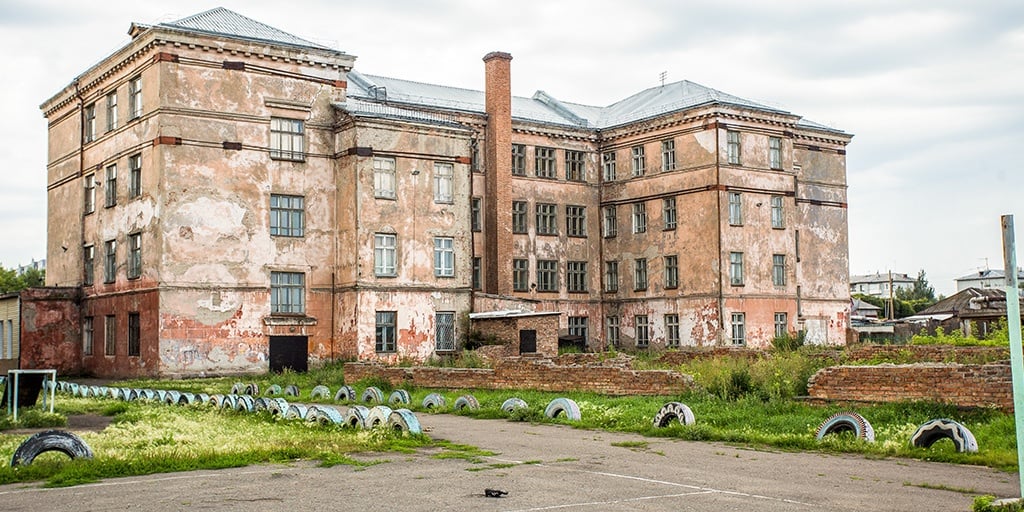As the experts say, “the greenest building is one that already exists.” However, when considering adaptive reuse projects in towns and cities across America, many developers overlook one of the most obvious green buildings in the area: the local school.
Over the years as educational needs have changed, the trend has been for smaller, historic urban schools to relocate to larger, suburban areas. Though these abandoned urban schools have largely been dismissed by the communities surrounding them, developers are increasingly realizing that the beautiful and sturdy old school buildings of yesteryear are perfect for adaptive reuse projects today.
Why Schools Abandon Older Buildings
One of the main reasons developers may overlook school buildings for adaptive reuse projects is because these structures have often been abandoned for so long they’ve become nearly invisible. Older, long-term neighborhood residents may avoid talking about the facility because they still grieve the loss of a building that played so prominently in their memories. Younger residents may view the fenced-off school with its surrounding acreage merely as an obstacle between them and their intended destination. To this group, the school is simply a dead lot, similar to the weed-covered, chain-link-fenced square of land they pass every day.
Though the buildings are impressive and often lovely, districts close down these schools because they see the building as “nostalgic.” Sure, it’s nice to look at, local board members say, but it’s unable to meet our changing educational needs.
The top reasons school districts decide to close historic schools are:
- Size: Perhaps they need more land for athletic fields or perhaps the growing local student population has made the building’s classrooms, as well as its cafeteria and gym, too small or too unsafe for modern educational purposes and mandates.
- Regulations: The cost of bringing a building up to code or meeting Americans with Disabilities Act requirements may also be too high for schools, especially once districts start considering the myriad of other updates they need for the facilities.
- Access: Districts may also have troubles bussing students in and out due to traffic congestion issues at key times in the day. Teachers, parents, and students may also be frustrated by limited parking options when the school is located on a relatively small lot.
Unfortunately, the fact that a school district abandoned a building often leads developers to overlook the property as well. This is a mistake, because educational needs are typically extremely specific and don’t translate into other industries. Developers looking to invest in a historic school building don’t face the same restrictions as their local school district.
The Benefits of Historic School Buildings for Adaptive Reuse
Ask any group of people about their K-12 experience and you’ll hear a wide variety of responses. Some people hated school. Others loved their school-age years and look back fondly at the teachers and communities they grew up in. Still others won’t be able to remember much about their school experience because it had so little to do with who they are today.
Regardless, most people will agree that their school buildings made an impression on them.
Whether large or small, school buildings (especially pre-war structures) were built to be both inspiring and solid. The structures were built to last and were often also built to be the focal point of their communities. Because of this, schools of years past featured a level of detail, craftsmanship, and materials we rarely see today.
But the appeal of historic school buildings goes far beyond architectural aesthetics. These buildings are also:
- Located in walkable / bikeable areas that attract young couples
- More sustainable, with naturally built-in LEED certification measures
- Often more affordable than new construction, especially when demolition is considered
- A community rallying point that can garner astonishing project support
- Frequently subsidized by federal and state tax credits
Best of all, historic school buildings are also often more effective for mixed-use adaptive reuse projects than other similar alternatives because of their wide range of existing amenities such as kitchens, gyms, spacious hallways, airy classrooms, and high ceilings.
Rural Schools Also Present Opportunities
The trend toward recycling school buildings isn’t just a metro-area phenomenon – abandoned schools are a growing investment prospect in rural areas too.
Many rural communities at the edges of urban areas have recently been experiencing fast growth for the same reason that older urban areas started growing a decade ago: housing costs.
As older, less desirable areas in the cities have been upgraded to reflect the needs and interests of millennials, the costs in these areas have also been upgraded. New families often must now rent or purchase just outside the city in nearby rural areas. The resulting population boom in these communities means they need to close their older, smaller, rural schools and build new, larger facilities at the edges of town.
Unlike historic urban school buildings, recently abandoned rural schools often contain essential modern amenities already, such as broadband and updated HVAC systems.
Since growing rural communities typically lack adequate rental opportunities, healthcare facilities, and entertainment activities, rural schools that lend themselves to these types of adaptive reuse projects stand to profit handsomely.
The Value of a Good Education Building
As we all understand in this industry, historic buildings don’t simply “wear out.” On the contrary, although older structures may require updates to windows, roofs, doors, and mechanical systems in order to serve a new purpose, the buildings themselves can last indefinitely.
Since repurposing the built environment has been shown to be significantly less expensive than demolishing and rebuilding, and also creates significantly less landfill waste and a lower carbon footprint, the practice of repurposing abandoned historic school buildings in both urban and rural landscapes may prove to be the next great development deal of the century.
Interested in more articles about the future of architecture? Looking for current regulatory updates and architectural news in your area? Subscribe to the Insights blog from Milrose to keep up with the latest.








